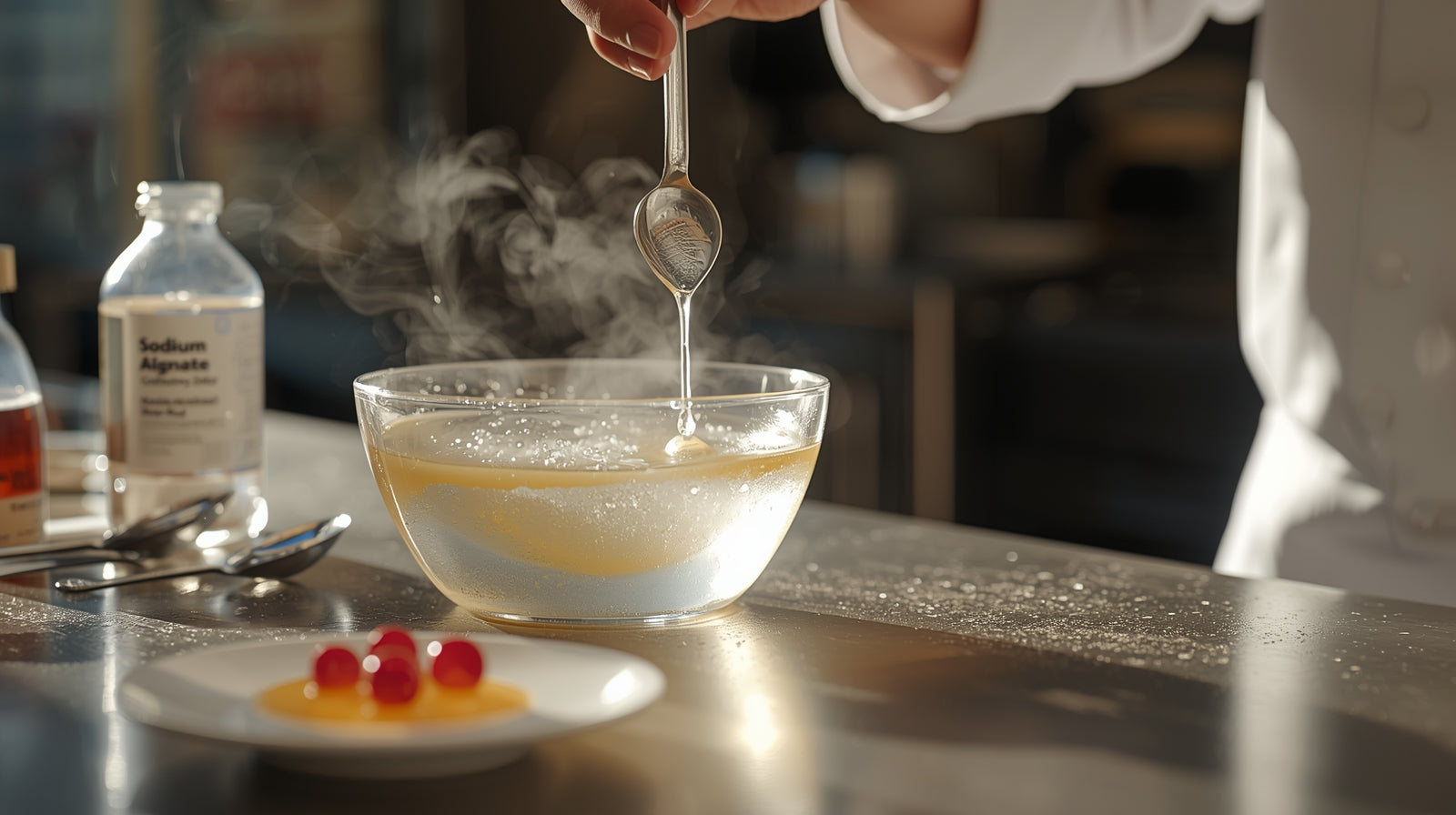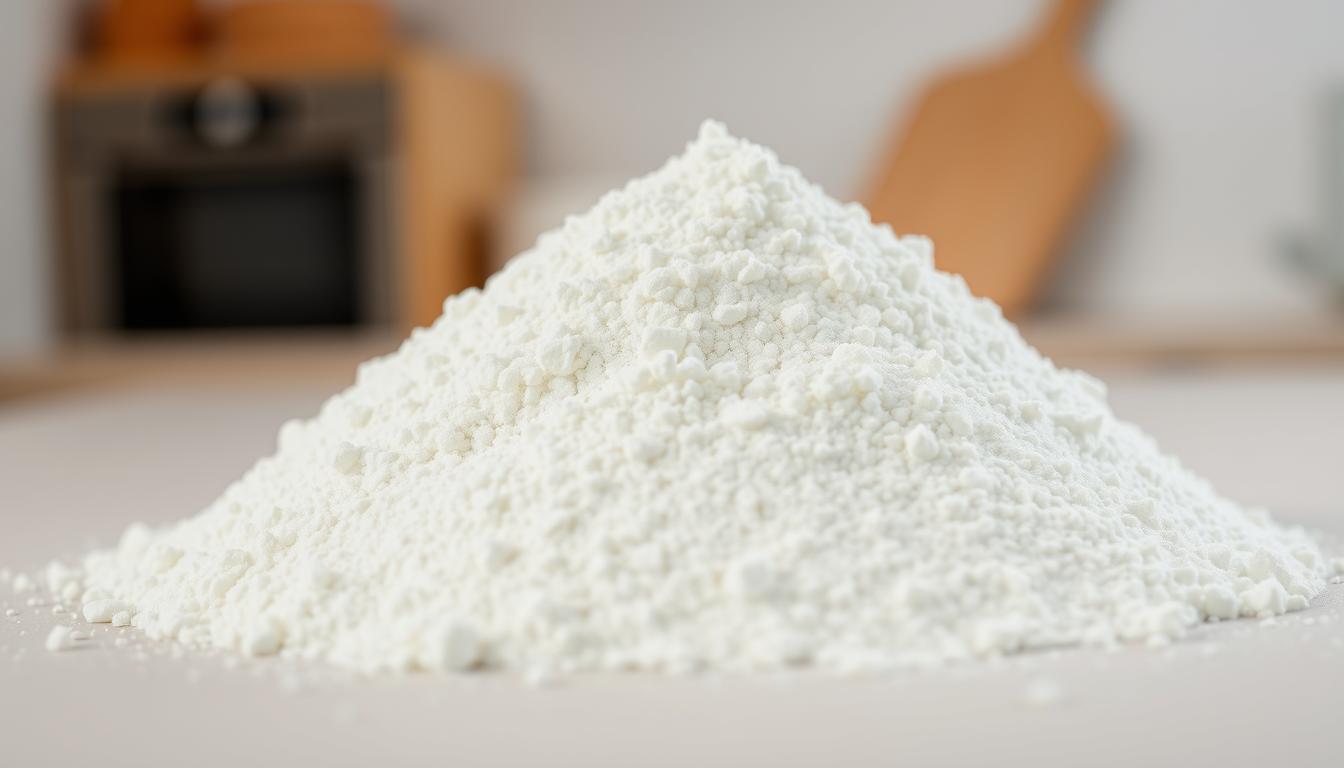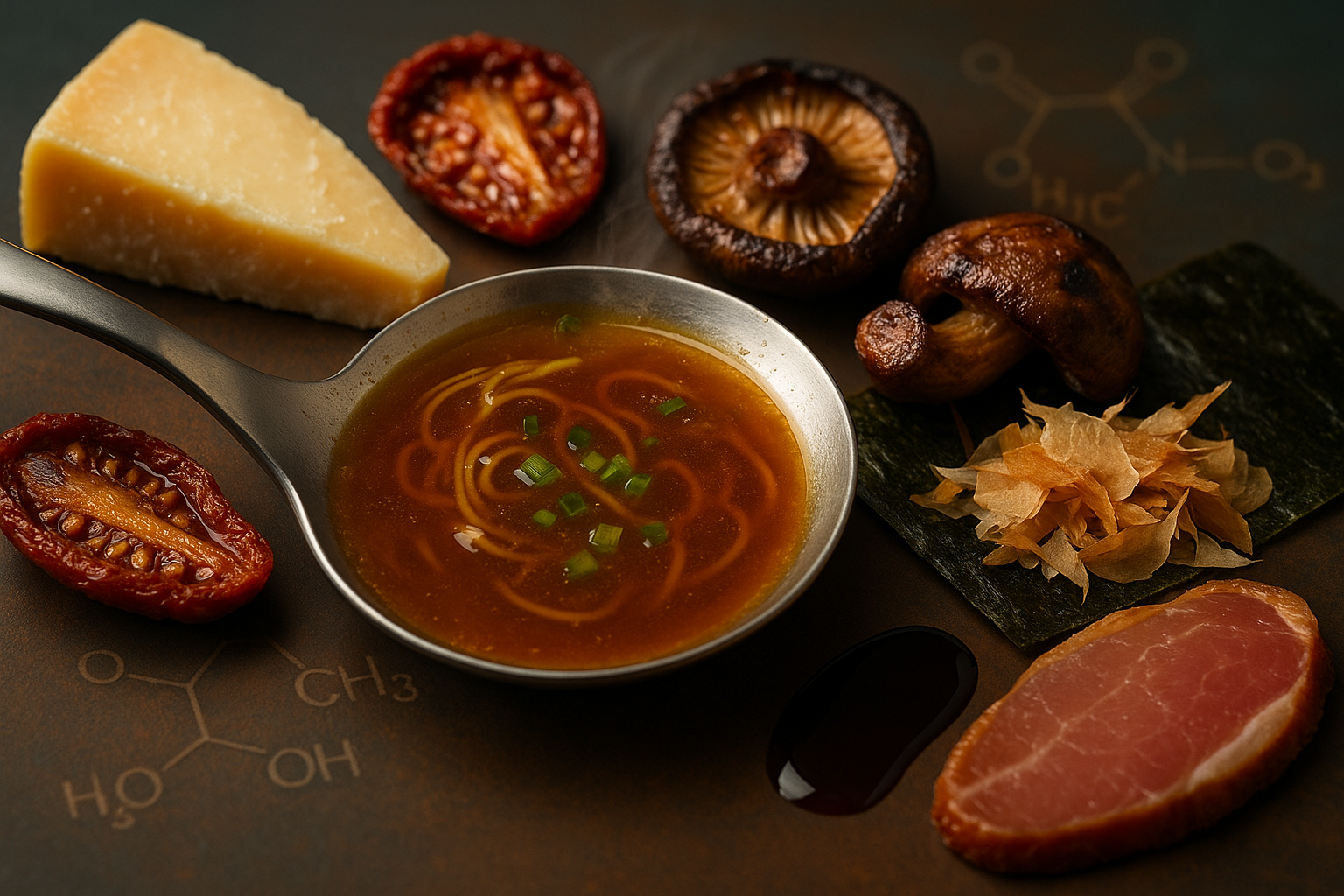
Exploring How Hydrocolloid Affects Food Products' Rheological Properties
SUBSCRIBE TO OUR BLOG
Promotions, new products, and recipes.
Have you ever wondered why some foods have a thick, creamy texture while others are thin and runny? The answer lies in the rheological properties of food products - their texture, consistency, viscosity, elasticity, and thixotropy. These properties play a crucial role in the overall eating experience, affecting everything from mouthfeel to flavor release.
One key ingredient that can significantly impact these rheological properties is hydrocolloid. Hydrocolloids are used extensively in the food industry to modify and enhance the texture and consistency of various products. In this section, we will examine the science behind how hydrocolloids affect food rheology and explore their role in shaping our favorite foods.
Key Takeaways
- Hydrocolloid can significantly impact the rheological properties of food products
- Rheological properties are crucial for the overall eating experience
- Hydrocolloids are commonly used in the food industry to modify and enhance food texture and consistency
The Basics of Rheological Properties
Before we delve into the specifics of how hydrocolloids affect food products' rheological properties, it's essential to understand the fundamentals. Rheological properties are a set of characteristics that describe how a food product behaves and flows when subjected to external forces such as .
The rheological properties of food products are crucial because they can affect sensory attributes such as texture, mouthfeel, and flavor. Moreover, rheological properties also influence processing and storage, affecting factors such as mixing, pumping, and stability.
Food rheology comprises various parameters, the most important of which are viscosity, elasticity, and thixotropy. Viscosity refers to the resistance of a product to flow under shear stress. A product with high viscosity is thick and sticky, whereas a low-viscosity product is thin and runny.
Elasticity refers to the ability of the product to deform and recover its shape after stress is applied. For instance, a chewy candy with high elasticity will bounce back after biting, whereas a brittle candy will crumble.
Thixotropy is the phenomenon whereby a product's viscosity decreases over time due to shear-induced breakdown of its microstructure. For example, when shaking a ketchup bottle, the solid particles in the sauce break down, causing it to become runnier and more pourable.
What Are Hydrocolloids?
Hydrocolloids are a diverse group of compounds commonly used in the food industry to modify and enhance the rheological properties of various products. These compounds are typically polysaccharides or proteins that have the ability to form gels or interact with water to modify the texture, viscosity, and stability of food products.
Hydrocolloids are classified into different categories based on their origin, chemical structure, and functionalities. Some of the most commonly used hydrocolloids in food products include:
Each hydrocolloid has its unique set of properties that make it suitable for specific applications and food products. For example, carrageenan is often used in dairy products because of its ability to form stable gels, while xanthan gum is added to salad dressings and sauces to improve their texture and prevent separation.
The Role of Hydrocolloids in Food Rheology
Hydrocolloids have a significant impact on the rheological properties of food products. These compounds are used to modify viscosity, elasticity, and thixotropy, thereby improving texture and consistency in a wide range of food items. The effect of hydrocolloids on food rheology is well-documented, and manufacturers have been employing these ingredients for decades to achieve desired rheological properties in their products.
Hydrocolloids can be added to food products at different stages in the production process, depending on the desired outcome. The type and amount of hydrocolloid used are crucial factors in determining the final rheological properties of the food item. For example, in bakery applications, hydrocolloids are added during the dough mixing stage to improve dough rheology. In sauces and dressings, hydrocolloids are used to control viscosity and prevent phase separation.
The effect of hydrocolloids on food rheology is due to their unique functionalities. Some hydrocolloids, like xanthan gum, have high viscosity profiles and can impart a thick, smooth texture to food products. Others, like carrageenan, have gelation properties and can be used to create stable gels in low-fat dairy products. Hydrocolloids can also impact food texture by modifying the size and stability of air bubbles in whipped products, such as cream and meringue.
Overall, hydrocolloids provide a versatile tool for food formulators to achieve desired rheological properties in their products. By understanding the impact of specific hydrocolloids on food texture and consistency, manufacturers can select the right ingredients to optimize their formulations and meet consumer expectations.
Hydrocolloid Usage in the Food Industry
Hydrocolloids are widely used in the food industry to modify and control the rheological properties of various products. The incorporation of hydrocolloids allows food manufacturers to achieve specific texture and consistency characteristics, making it a crucial aspect of product development.
Hydrocolloids are used in a variety of food products, including beverages, sauces, dressings, bakery items, and confectionery, among others. In these applications, hydrocolloids act as thickeners, stabilizers, emulsifiers, and gelling agents.
One of the critical functions of hydrocolloids in food products is to control and modify the food viscosity. Hydrocolloids can increase or decrease the viscosity of a product depending on the type and concentration used. This property is essential in ensuring that products have a consistent flow, spreadability, and processability.
In general, hydrocolloids are selected based on their functional properties and compatibility with the food matrix. For example, xanthan gum is commonly used in salad dressings, beverages, and other thickened products due to its pseudoplasticity and high viscosity, while carrageenan is used in dairy products, such as ice cream and yogurt, due to its ability to form a stable gel network.
In conclusion, hydrocolloids are critical ingredients in the food industry, allowing manufacturers to modify and control the rheological properties of food products. By harnessing their functionality, food manufacturers can produce products with consistent texture, spread, and flow.
Hydrocolloid Selection and Functionality
Selecting the right hydrocolloid for a food product is crucial for achieving the desired rheological properties. Several factors must be considered when choosing a hydrocolloid, including the food matrix, processing conditions, and end-use application. Additionally, the concentration, molecular weight, and degree of substitution also play a critical role in determining the functionality of the hydrocolloid in food products.
There are several classes of hydrocolloids, each with their own unique functionality. For example, cellulose derivatives like carboxymethylcellulose (CMC) and methylcellulose (MC) are commonly used as thickeners and stabilizers in a wide range of food products due to their excellent water-binding properties. On the other hand, gum arabic and xanthan gum are highly effective in controlling the viscosity of liquid systems.
The choice of hydrocolloid can have a significant impact on the texture and mouthfeel of the final product. Hence, it is essential to consider the sensory attributes of the food product and the desired consumer experience when selecting a hydrocolloid.
In summary, choosing the right hydrocolloid and concentration is critical for achieving the desired rheological properties and texture in food products. By carefully considering the factors outlined above and understanding the functionality of different hydrocolloids, food manufacturers can create products with optimal texture and mouthfeel.
Hydrocolloids and Product Development
In the food industry, product development is an intricate process that requires careful consideration of various aspects, including food rheology. Hydrocolloids play a vital role in this process, as they offer a range of functionalities that can be tailored to specific product needs.
One of the key considerations when selecting hydrocolloids for product development is the desired texture and consistency of the final product. Different hydrocolloids have unique functionalities that can impact food rheology in different ways, from controlling viscosity to improving stability and preventing phase separation.
The specific hydrocolloid chosen can also influence processing conditions, such as heating and cooling processes, as well as the product's sensory properties, such as mouthfeel and flavor release.
Therefore, it is vital to consider the role of hydrocolloids in product development, from formulation to optimization and beyond. By understanding the functionality of different hydrocolloids and their impact on food rheology, manufacturers can develop products with optimized sensory and rheological properties that meet customer expectations.
Case Studies: Hydrocolloids in Action
Now that we've explored the impact of hydrocolloids on food rheology, let's take a look at some real-life examples of how these ingredients can be used to control and modify texture and consistency in food products.
Case Study 1: Beverages
In the development of a new fruit juice drink, the goal was to create a product with a smooth, pulp-free texture. To achieve this, a combination of pectin and xanthan gum was added to the formulation, resulting in a higher viscosity and improved mouthfeel. The hydrocolloids also helped to prevent settling and separation of pulp and juice particles.
Case Study 2: Dressings
A salad dressing manufacturer was looking to improve the stability and mouthfeel of their product, which tend to separate and become watery over time. Addition of hydroxypropylmethylcellulose (HPMC) and guar gum to the formulation provided improved emulsion stability and viscosity, resulting in a thicker, creamier dressing that stayed consistent for longer periods of time.
Case Study 3: Bakery Items
A bakery wanted to develop a gluten-free bread that had a similar texture and elasticity to traditional wheat bread. Incorporation of hydrocolloids such as psyllium and methylcellulose helped to improve the dough handling and structure, resulting in a bread with a soft, chewy texture and good volume.
Case Study 4: Confectionery
A candy manufacturer was experiencing difficulties with controlling the rheological properties of their caramel candies, which often resulted in stickiness and uneven texture. The addition of hydrocolloids such as carrageenan and locust bean gum helped to improve the firmness and chewiness of the candies, resulting in a more consistent and desirable texture.
These case studies demonstrate the versatility and impact of hydrocolloids in food product development. By carefully selecting and incorporating the right hydrocolloids, manufacturers can achieve specific rheological properties and improve the overall quality of their food products.
Conclusion
In conclusion, the use of hydrocolloids in the food industry has revolutionized the way manufacturers modify and enhance the rheological properties of food products. Through this article, we have explored the science behind how hydrocolloids affect food texture, consistency, viscosity, elasticity, and thixotropy. We have also discussed the importance of considering rheological properties and hydrocolloid functionality during the formulation and optimization of food products.
By leveraging the different types of hydrocolloids available, food manufacturers can achieve specific rheological properties to optimize texture, consistency, and overall product quality. Hydrocolloids have a significant impact on food rheology, and selecting the right hydrocolloid is crucial for achieving the desired rheological properties. The widespread use of hydrocolloids in the food industry is a testament to their functionality in improving food texture and consistency.
As the food industry continues to innovate and develop new products, the role of hydrocolloids in product development will become even more critical. We hope this article has provided valuable insights into how hydrocolloids affect the rheological properties of food products and their significant impact on the food industry.
FAQ
What are hydrocolloids?
Hydrocolloids are a diverse group of compounds commonly used in the food industry to modify and enhance the rheological properties of various products. They are often polysaccharides or proteins that have the ability to form a gel or thicken a solution when dispersed in water.
How do hydrocolloids affect food texture?
Hydrocolloids can have a significant impact on food texture. They can increase viscosity, improve mouthfeel, provide stability, and enhance the overall sensory experience of food products. The specific effects depend on the type and concentration of hydrocolloid used.
Can hydrocolloids change the consistency of food products?
Yes, hydrocolloids can alter the consistency of food products. They can make liquids thicker, stabilize emulsions, prevent syneresis, and improve the structure of gels. By adjusting the concentration and type of hydrocolloid, food manufacturers can achieve the desired consistency for their products.
Are hydrocolloids safe to consume?
Yes, hydrocolloids are generally considered safe for consumption. They have been extensively tested and approved by regulatory authorities such as the FDA. However, individuals with specific allergies or sensitivities should always check the ingredient list and consult with a healthcare professional if necessary.
How do I choose the right hydrocolloid for my food product?
Selecting the right hydrocolloid for a food product requires considering factors such as the desired rheological properties, processing conditions, and compatibility with other ingredients. It is important to consult with experts or utilize resources provided by hydrocolloid suppliers to make an informed decision.
Can hydrocolloids be used in all types of food products?
Hydrocolloids have a wide range of applications in the food industry. They can be used in beverages, sauces, dressings, bakery items, confectionery, and many other products. However, the specific hydrocolloid and its concentration may vary depending on the desired functionality and compatibility with other ingredients.
Do hydrocolloids affect the nutritional content of food products?
Hydrocolloids themselves do not significantly alter the nutritional content of food products. However, they can indirectly affect nutritional factors by improving the stability and shelf life of products, which may impact nutrient retention. It is important to consider the overall formulation and processing of the product when assessing its nutritional profile.
Are there any alternatives to hydrocolloids for modifying rheological properties?
Yes, there are alternatives to hydrocolloids for modifying rheological properties. Some examples include starches, gums, proteins, and emulsifiers. These ingredients can also contribute to texture enhancement and stability in food products. The choice of alternative will depend on the specific application and desired outcome.
Are there any potential challenges associated with using hydrocolloids in food products?
While hydrocolloids offer many benefits, there can be challenges associated with their usage. These include the need for precise formulation and processing, potential interactions with other ingredients, and the impact of different environments (pH, temperature, etc.) on their functionality. It is important to have a thorough understanding of these factors when utilizing hydrocolloids in food product development.
Comments, please:
We would apprecaite hearing from you. Please add your comments below. We will reply to them.
See: The Hydrocolloid Glossary
For further reading:Uncovering the Relationship of Food Science to Hydrocolloids

About the Editor
About the Chef Edmund: Chef Edmund is the Founder of Cape Crystal Brands and EnvironMolds. He is the author of several non-fiction “How-to” books, past publisher of the ArtMolds Journal Magazine and six cookbooks available for download on this site. He lives and breathes his food blogs as both writer and editor. You can follow him on Twitter and Linkedin.


|
About the Author Ed is the founder of Cape Crystal Brands, editor of the Beginner’s Guide to Hydrocolloids, and a passionate advocate for making food science accessible to all. Discover premium ingredients, expert resources, and free formulation tools at capecrystalbrands.com/tools. — Ed |
Enjoyed this post? Subscribe to The Crystal Scoop
Food-science tips, ingredient know-how, and recipes. No spam—unsubscribe anytime.
- Choosing a selection results in a full page refresh.



